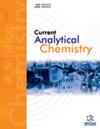Research Progress in the Detection of Aflatoxin B1 Based on Aptamers
IF 1.7
4区 化学
Q3 CHEMISTRY, ANALYTICAL
引用次数: 0
Abstract
: Aflatoxin B1 is highly toxic, mutagenic, teratogenic, and carcinogenic and is a class I carcinogen. Peanuts, cotton, and corn may be affected by AFB1 during cultivation, which can seriously jeopardize human health. Developing a simple, sensitive, and selective method for detecting AFB1 is imminent. Aptamers are obtained through in vitro screening of ligands by single-stranded oligonucleotides (DNA or RNA) through exponential enrichment (SELEX) technology. As emerging highly selective recognition molecules, they have the advantages of strong affinity, good stability, and strong specificity. Because it does not have the function of signal conversion, it cannot produce physicochemical signals that can be detected in the process of specific binding with target molecules, so it is necessary to convert the process of specific binding of aptamers to target molecules into a process of easily detectable physicochemical signal changes. According to different conversion methods, aptamer biosensors are divided into electrochemical aptamer sensors, fluorescent aptamer sensors, colorimetric aptamer sensors, surface Raman-enhanced aptamer sensors, and so on. Herein, the recent progress and application of aflatoxin B1 detection by nucleic acid aptamer biosensors based on the above signals are reviewed, and the future development prospects and challenges of this kind of biosensor are summarized.基于 Aptamers 的黄曲霉毒素 B1 检测研究进展
:黄曲霉毒素 B1 具有高毒性、致突变性、致畸性和致癌性,属于一级致癌物。花生、棉花和玉米在种植过程中可能受到 AFB1 的影响,严重危害人类健康。开发一种简单、灵敏、选择性强的 AFB1 检测方法迫在眉睫。Aptamers 是通过指数富集(SELEX)技术对单链寡核苷酸(DNA 或 RNA)配体进行体外筛选而获得的。作为新兴的高选择性识别分子,它具有亲和力强、稳定性好、特异性强等优点。由于其不具备信号转换功能,在与靶分子特异性结合的过程中无法产生可检测的理化信号,因此需要将aptamers与靶分子的特异性结合过程转换为易于检测的理化信号变化过程。根据转换方法的不同,适配体生物传感器可分为电化学适配体传感器、荧光适配体传感器、比色适配体传感器、表面拉曼增强适配体传感器等。本文综述了基于上述信号的核酸适配体生物传感器检测黄曲霉毒素 B1 的最新进展和应用,并总结了这类生物传感器的未来发展前景和挑战。
本文章由计算机程序翻译,如有差异,请以英文原文为准。
求助全文
约1分钟内获得全文
求助全文
来源期刊

Current Analytical Chemistry
化学-分析化学
CiteScore
4.10
自引率
0.00%
发文量
90
审稿时长
9 months
期刊介绍:
Current Analytical Chemistry publishes full-length/mini reviews and original research articles on the most recent advances in analytical chemistry. All aspects of the field are represented, including analytical methodology, techniques, and instrumentation in both fundamental and applied research topics of interest to the broad readership of the journal. Current Analytical Chemistry strives to serve as an authoritative source of information in analytical chemistry and in related applications such as biochemical analysis, pharmaceutical research, quantitative biological imaging, novel sensors, and nanotechnology.
 求助内容:
求助内容: 应助结果提醒方式:
应助结果提醒方式:


